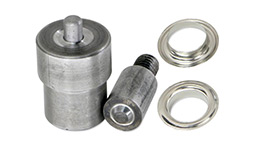
Sep . 25, 2024 00:12
Back to list
high pressure regulators
Understanding High Pressure Regulators Essential Components for Safe and Efficient Gas Management
High pressure regulators are crucial components in numerous industrial and commercial applications involving gas systems. These devices are designed to control the pressure of gases, ensuring safe and efficient operation within various processes. In this article, we will delve into the functionality, types, and applications of high pressure regulators, as well as their importance in maintaining system safety and efficiency.
What is a High Pressure Regulator?
A high pressure regulator is a mechanical device that reduces the pressure of a gas from a high-pressure source to a lower, more usable level. This is vital because many gases are stored and transported at high pressures, which can be hazardous if not properly managed. Regulators help to maintain a constant output pressure, regardless of fluctuations in the input pressure, ensuring that systems operate smoothly and safely.
How Do High Pressure Regulators Work?
The operation of high pressure regulators is based on pressure differential mechanics. When high-pressure gas enters the regulator, it moves past a diaphragm that responds to the pressure levels. As the gas exerts pressure on the diaphragm, the regulator adjusts a valve to restrict the flow, consequently reducing the output pressure. This balancing act enables efficient control over gas delivery to downstream applications.
Most high pressure regulators feature a spring mechanism that helps maintain a set output pressure. The spring tension can often be adjusted, allowing users to customize the operational pressure according to specific requirements. Additionally, high pressure regulators are equipped with safety features, such as pressure relief valves, to protect against over-pressurization and potential hazards.
Types of High Pressure Regulators
High pressure regulators can be categorized based on various factors, including
high pressure regulators

1. Single-Stage vs. Two-Stage Regulators - Single-Stage Regulators These reduce the pressure in a single step and are typically used for applications with relatively stable pressure requirements. - Two-Stage Regulators These provide a two-step reduction in pressure, leading to more stable output, particularly in systems with significant pressure variations.
2. Diaphragm vs. Piston Regulators - Diaphragm Regulators Utilize a flexible diaphragm to control pressure and are commonly used for gases. - Piston Regulators Employ a piston mechanism and offer higher sensitivity, suitable for applications requiring precise pressure control.
3. High Flow vs. Low Flow Regulators Depending on the flow requirements, high flow regulators are designed to accommodate larger volumes of gas, while low flow regulators excel in applications with minimal gas consumption.
Applications of High Pressure Regulators
High pressure regulators are employed across diverse industries, such as
- Medical Equipment In hospitals and clinics, high pressure regulators ensure a steady supply of medical gases like oxygen, maintaining patient safety. - Welding and Cutting These regulators are essential in welding applications, controlling the gas flow required for various techniques. - Oil and Gas In exploration and production, regulators help manage gas pressures in pipelines and processing facilities, ensuring efficient operations. - Manufacturing Many manufacturing processes rely on consistent gas supply for heating, cooling, and chemical reactions, making high pressure regulators indispensable.
Importance of High Pressure Regulators
The importance of high pressure regulators cannot be overstated. They play a vital role in ensuring safety, efficiency, and reliability in gas management systems. By maintaining appropriate pressure levels, these regulators help prevent accidents, improve system performance, and extend the lifespan of equipment. In industries where gas safety is paramount, such as healthcare and manufacturing, the proper use and maintenance of high pressure regulators are essential.
In conclusion, high pressure regulators are fundamental devices that facilitate the safe and efficient management of gases in various applications. Their ability to maintain stable pressure levels ensures safety and operational efficiency across numerous industries. Understanding the workings and importance of these regulators helps organizations better manage their gas systems, contributing to enhanced safety and productivity.
Latest news
-
Safety Valve Spring-Loaded Design Overpressure ProtectionNewsJul.25,2025
-
Precision Voltage Regulator AC5 Accuracy Grade PerformanceNewsJul.25,2025
-
Natural Gas Pressure Regulating Skid Industrial Pipeline ApplicationsNewsJul.25,2025
-
Natural Gas Filter Stainless Steel Mesh Element DesignNewsJul.25,2025
-
Gas Pressure Regulator Valve Direct-Acting Spring-Loaded DesignNewsJul.25,2025
-
Decompression Equipment Multi-Stage Heat Exchange System DesignNewsJul.25,2025

